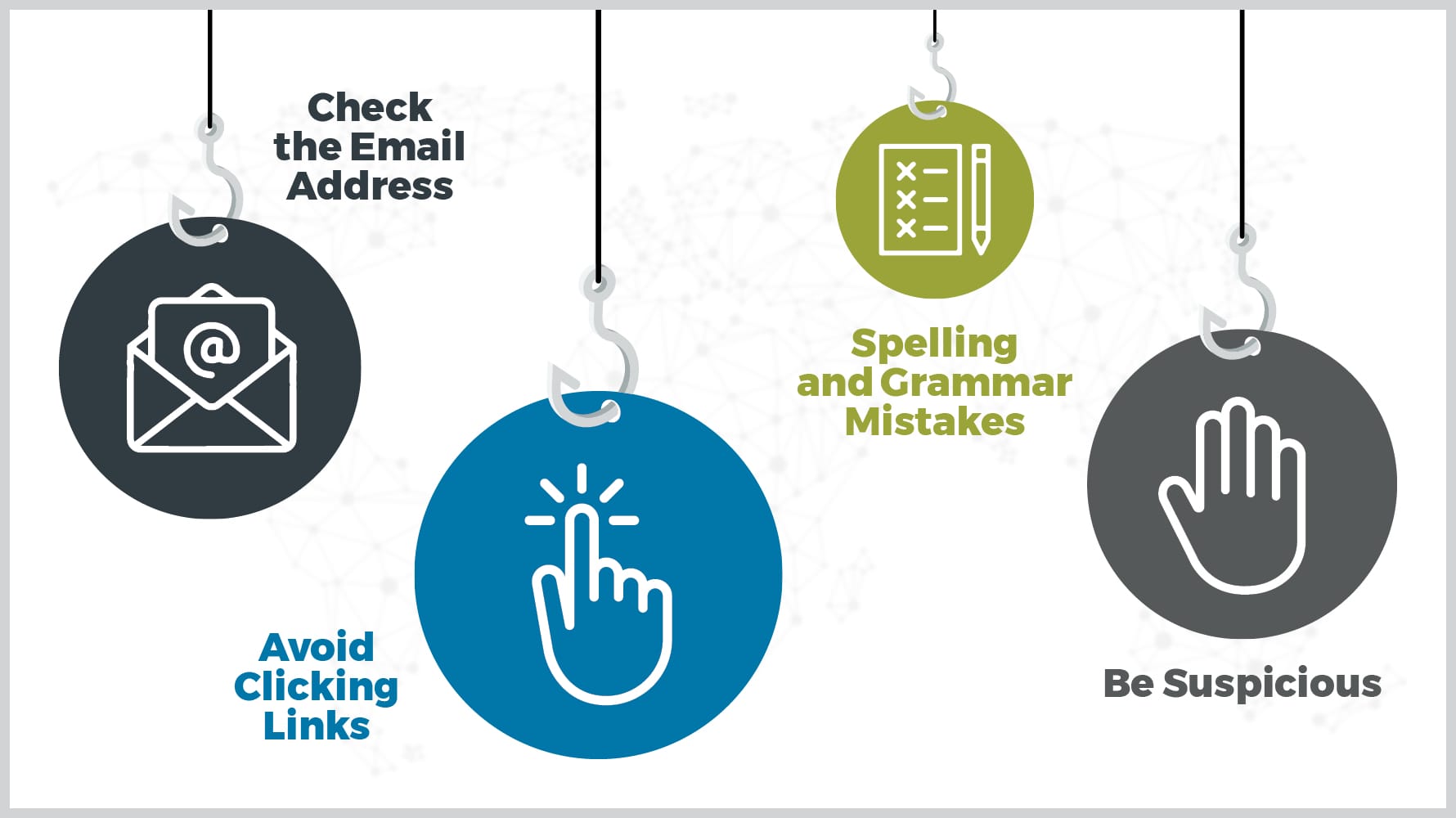
As the world of the internet continues to evolve, phishing attacks are more prevalent than ever before. We have to ensure we are vigilant as not to release sensitive company, personal, or financial information. When a phishing email makes its way into our email inbox there often ways to determine whether or not they are legitimate. Today we are sharing 4 easy ways to identify phishing emails, so you don’t end up hooked by a malicious attempt at your information.
Check out our Quick Tip video about it here as well.
1. Check the Email Address
Always check the email address. Oftentimes phishing emails look similar to the emails of your contacts or work colleagues but will be slightly misspelled or from a different email service. If you receive emails from joejones@outlook.com you might see a phishing email from jojones@outlook.com or joejones@gmail.com. These tricks are most common and if you aren’t paying attention, usually successful. The simple change of a few letters can lead to suspicious links and breached information, so always be on the lookout. If you suspect phishing for any reason, always confirm with the person you’re corresponding with outside of email or contact your IT help desk.
2. Avoid Clicking Links
Avoid clicking links you aren’t familiar with, even if the email appears to be from a legitimate source. Phishing links are often disguised to look like one web address, but when you click the link it leads to a malicious site. Always contact the person who sent you the link to confirm it is legitimate. While you might risk waiting to view a website or video while you wait for confirmation, the consequences far outweigh the wait time. An advanced tip is to copy the link and paste it into a word document to see if the link matches in both places. Sometimes you can even highlight and right-click the link to “inspect” the link for malice. Always contact your IT help desk if a link appears suspicious.
3. Spelling and Grammar Mistakes
Check for odd spelling and grammar mistakes in the email. While one or two typos may not be cause for alarm, robotic and awkward sentence structure is a strong sign of phishing. If you notice these oddities, always contact your IT help desk to confirm whether or not you have a phishing attempt on your hands. This will aid the department in successfully blocking the attempt and preventing others from falling victim.
4. Be Suspicious
Overall, be suspicious. Most emails are innocent work or personal communication that causes no harm, but it never hurts to confirm with your co-workers and friends before you click on anything. Keeping an eye on email addresses, links, awkward wording, and always checking with your IT and help desk if you suspect phishing can protect you and your company from losing important information. While it might seem like a hassle, getting caught compromised is never a situation we want to find ourselves in. Be sure to protect yourself by being vigilant and aware of inconsistencies.
While emailing has become so much more than electronic mail, we can still enjoy the convenience of instant communication if we implement these simple strategies. Educating yourself on how to recognize and combat phishing will make emailing safer for you and your company.



